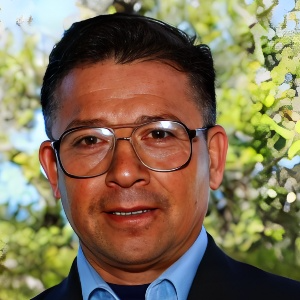Edgar Omar Rueda Puente, Universidad de Sonora, Mexico
Food production in the world is one of the greatest challenges to achieve various purposes, among which is the supply of foods of plant origin, under the principle of sustainability, health, quality and agri-food safety. In the agri-food field, the main agent is the Agricultural [....] » Read More



Title : Revealing allelic variations in candidate genes associated with grain yield under salinity stress between two contrasting rice genotypes
Nisha Sulari Kottearachchi, Wayamba University of Sri Lanka, Sri Lanka
With the aim of assisting the breeding of salinity tolerant rice varieties by incorporating tolerance-associated candidate genes with desirable alleles, we previously re-sequenced the whole genome of two varieties, At354 (salinity tolerant) and Bg352 (salinity susceptible), using [....] » Read More
Title : Primed for the Future: PGPR and the Promise of Sustainable, Heritable Crop Resilience
Prashant Singh, Banaras Hindu University (BHU), India
Achieving Sustainable Development Goal (SDG) 2: Zero Hunger requires innovative strategies to ensure stable crop yields in the face of mounting global challenges. Developing disease-resistant crops offers a sustainable alternative to chemical pesticides, which often harm the envi [....] » Read More
Title : Adaptive strategies of aristida L. Species across ecological zones of Pakistan: linking soil characteristics with morphological and physiological traits
Iram Ijaz, University of Agriculture Faisalabad Pakistan, Pakistan
In Pakistan, the grass genus Aristida (Family Poaceae) is studied for its physiological traits, ecological distribution, and adaptive strategies across diverse environments. This study investigates four species—Aristida adscensionis, A. cyanantha, A. funiculata, and A. muta [....] » Read More
Title : Exploring the genetic diversity in tannin-rich forages to explain the large intra species variability in tannin content
Selina Sterup Moore, Aarhus University, Denmark
Tannin-rich forages hold great potential in improving the environmental impact of ruminant production systems as they can reduce methane emissions by inhibiting enteric fermentation while simultaneously enhancing soil carbon sequestration by slowing decomposition and lowering eco [....] » Read More
Title : Genetic variability, heritability and genetic advance for yield and agronomic traits in winged bean
Ufuoma Lydia Akpojotor, International Institute of Tropical Agriculture, Nigeria
Winged bean (Psophocarpus tetragonolobus (L.) DC.) is an underutilized crop with valuable nutritional properties that can help alleviate nutritional insecurity. However, its global production remains low due to the lack of high-yielding varieties. Evaluating genetic variability i [....] » Read More